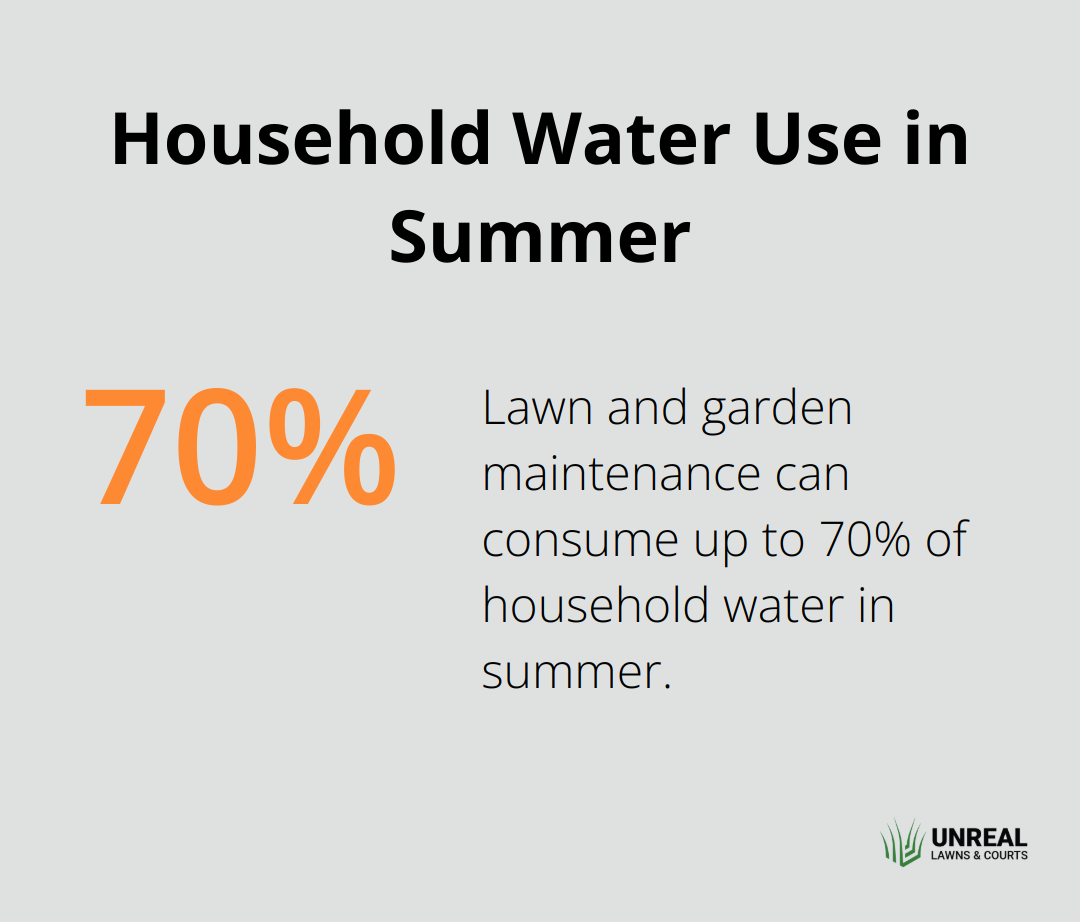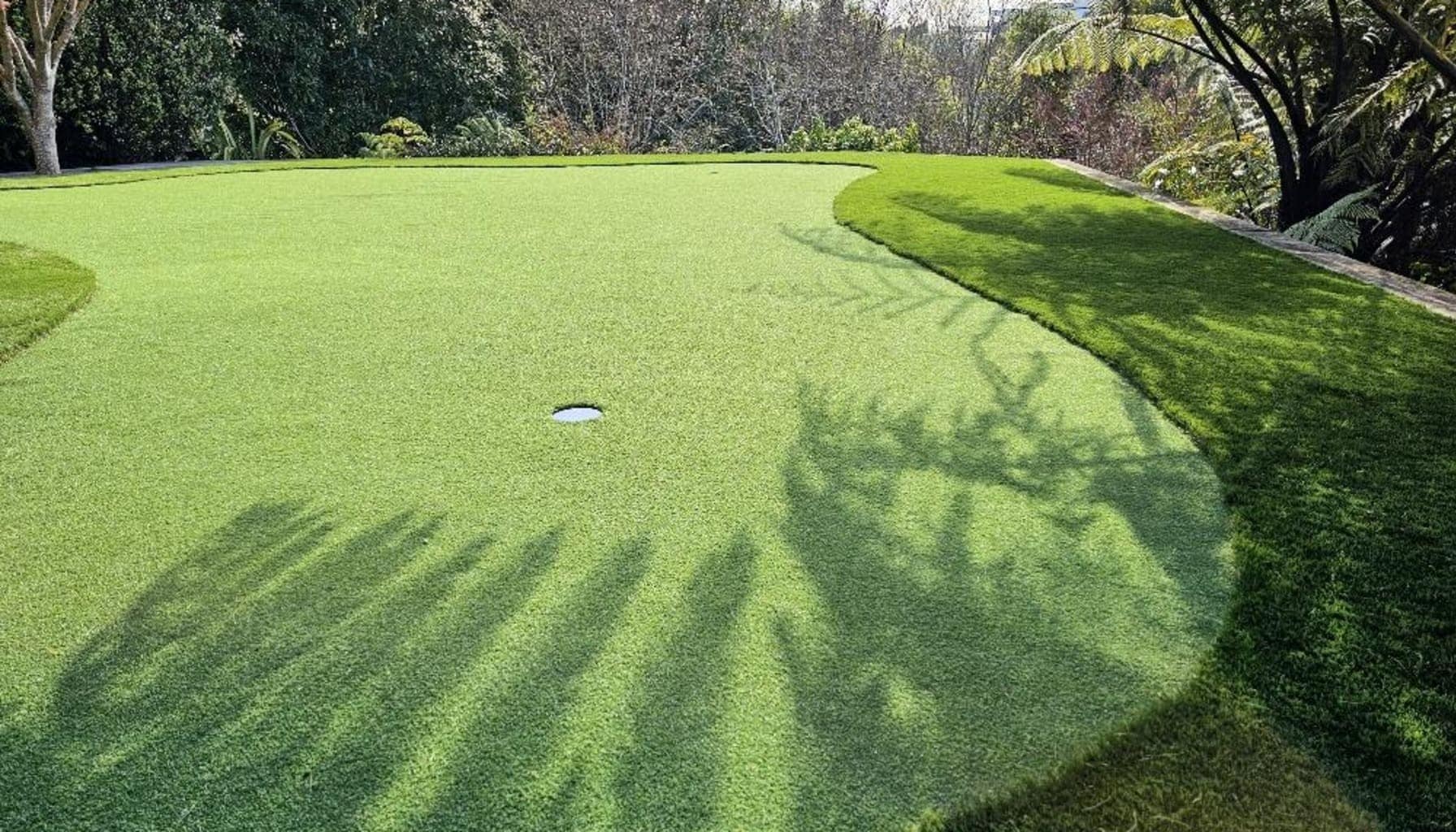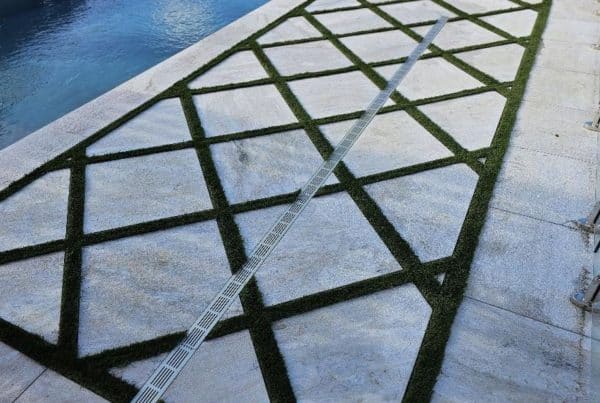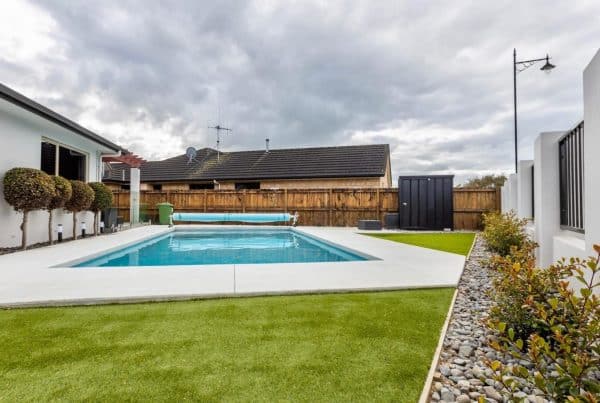At Unreal Lawns & Courts, we’re passionate about how to creating eco-friendly synthetic grass solutions. Traditional lawns often come with a hefty environmental price tag, but there’s a greener alternative.
Synthetic grass offers a sustainable way to maintain a beautiful, lush lawn without the ecological drawbacks. In this post, we’ll explore how artificial turf can help you create an eco-friendly lawn that’s both stunning and environmentally responsible.
The Hidden Environmental Costs of Traditional Lawns
Water Waste in a Thirsty World
Traditional lawns demand an astonishing amount of water. A typical 100 square metre lawn consumes about 70,000 litres of water annually. During summer months, lawn and garden maintenance accounts for up to 70% of household water use, placing immense pressure on local water supplies.

Chemical Cocktails Seeping into Our Ecosystem
The perfect lawn often results in the overuse of fertilisers and pesticides. These chemicals don’t remain on your grass; they infiltrate the soil and waterways.
The Carbon Footprint of Lawn Care
Lawn maintenance equipment (particularly gas-powered mowers) contributes significantly to carbon emissions.
Hidden Costs to Local Communities
The environmental toll of traditional lawns extends beyond individual properties. It affects our water reserves, soil health, and air quality on a community-wide scale. As we face increasing environmental challenges, we must reconsider our approach to landscaping and seek out more sustainable alternatives.
The impact of traditional lawns goes far beyond looks. These hidden environmental costs affect our ecosystems, water resources, and air quality. As we move forward, it’s essential to explore eco-friendly alternatives that can provide the lush, green spaces we desire without compromising our environment. In the next section, we’ll examine how synthetic grass offers a sustainable solution to these issues.
How To Creating Eco-Friendly Lawn With Synthetic Grass
Synthetic grass offers a range of environmental advantages that make it a good alternative to traditional lawns.
Dramatic Water Savings
One of the benefits of synthetic grass is its ability to conserve water. Unlike natural lawns that require constant watering especially during dry seasons. This leads to water savings. For a typical household in New Zealand, this could mean a significant reduction of outdoor water use during summer months.
A Chemical-Free Zone
Synthetic grass eliminates the need for fertilisers, pesticides, and herbicides. This absence of chemicals has far-reaching positive effects on the environment. Without these there’s no risk of harmful runoff contaminating local waterways or damaging soil ecosystems. For homeowners, this means a safer play area for children and pets, and for the broader community, it contributes to healthier local ecosystems.
Slashing Carbon Emissions
The environmental benefits of synthetic grass extend to air quality as well. Traditional lawn maintenance often involves gas-powered equipment like mowers and trimmers, which contribute to air pollution and carbon emissions. Synthetic grass helps reduce the carbon footprint associated with lawn care by eliminating the need for these tools. Homeowners can reclaim approximately 40 hours per year typically spent on lawn care.
High-quality eco friendly synthetic grass (such as the products offered by Unreal Lawns & Courts) can last between 15 to 20 years with proper care. This longevity reduces the need for frequent replacements, minimising waste. The durability of synthetic turf also makes it suitable for high-traffic areas such as sports fields and playgrounds, providing a consistent surface that doesn’t degrade under heavy use.
Eco-Friendly Manufacturing
The production of synthetic grass has evolved, with many manufacturers. Some companies even offer recyclable turf options at the end of their lifespan, further reducing environmental impact. As technology advances, we can expect even more sustainable production methods and materials in the synthetic grass industry.
The environmental benefits of synthetic grass make it an attractive option for those looking to create eco-friendly outdoor spaces. From water conservation to reduced chemical use and lower carbon emissions, artificial turf offers a practical solution to many environmental challenges associated with traditional lawns. In the next section, we’ll explore how to choose and install eco-friendly synthetic grass to maximise these benefits.
How to Choose and Install Eco-Friendly Synthetic Grass
Selecting High-Quality, Recyclable Materials
Opt for products that can be recycled. This choice reduces waste and minimises environmental impact.
Quality should not be compromised when selecting synthetic grass. High-quality materials not only appear more realistic but also last longer, which reduces replacement and associated waste. For New Zealand’s strong sunlight, UV-resistant options will maintain colour.
Professional Installation for Optimal Performance
Professional installation ensures your eco friendly synthetic lawn lasts for years. The process starts with ground preparation. This includes the removal of existing vegetation and levelling of the area.
A stable base supports the turf and aids in proper drainage. Use a layer of crushed rock Gap20, topped with Gap/7 , to create a smooth, even surface. When laying the turf, pay attention to seam joining. Proper seaming prevents visible lines and ensure the lawn looks natural.
The installation of a permeable base layer allows water to seep through to the soil below. This approach mimics natural and helps drain water. For areas prone to heavy rainfall, additional drainage solutions (like French drains) might become necessary.
Synthetic grass products come with built-in drainage systems. Synthetic grass facilitate water flow, making them ideal for regions with high rain fall.
Maintenance for Longevity
While synthetic grass requires less maintenance than natural lawns, proper care extends its lifespan and maintains its eco-friendly benefits. Regular brushing prevents matting and keeps the blades upright. Occasional rinsing removes dust and debris, maintaining the turf’s cleanliness and function.
For areas with heavy use, consider the placement of stepping stones to distribute foot traffic and reduce wear on the synthetic grass. This simple addition can significantly prolong the life of your eco-friendly lawn.
Final Thoughts
Synthetic grass offers a compelling solution for creating an eco-friendly lawn. It reduces water consumption, eliminates harmful chemicals, and cuts carbon emissions from lawn maintenance equipment. These benefits address many ecological concerns associated with traditional lawns and positively impact local ecosystems.
Unreal Lawns & Courts provides high-quality synthetic grass solutions that look great and contribute to a more sustainable future. Our products withstand New Zealand’s unique climate conditions while offering the aesthetic appeal of a lush, green lawn year-round. Choosing synthetic grass creates a beautiful outdoor space and reduces your environmental footprint.
The shift towards sustainable landscaping practices (including synthetic grass) contributes to the overall health of our environment and supports biodiversity in urban and suburban areas. It allows us to enjoy the beauty and functionality of a lawn without the ecological drawbacks of traditional turf. We can create outdoor environments that are visually appealing and environmentally responsible.





